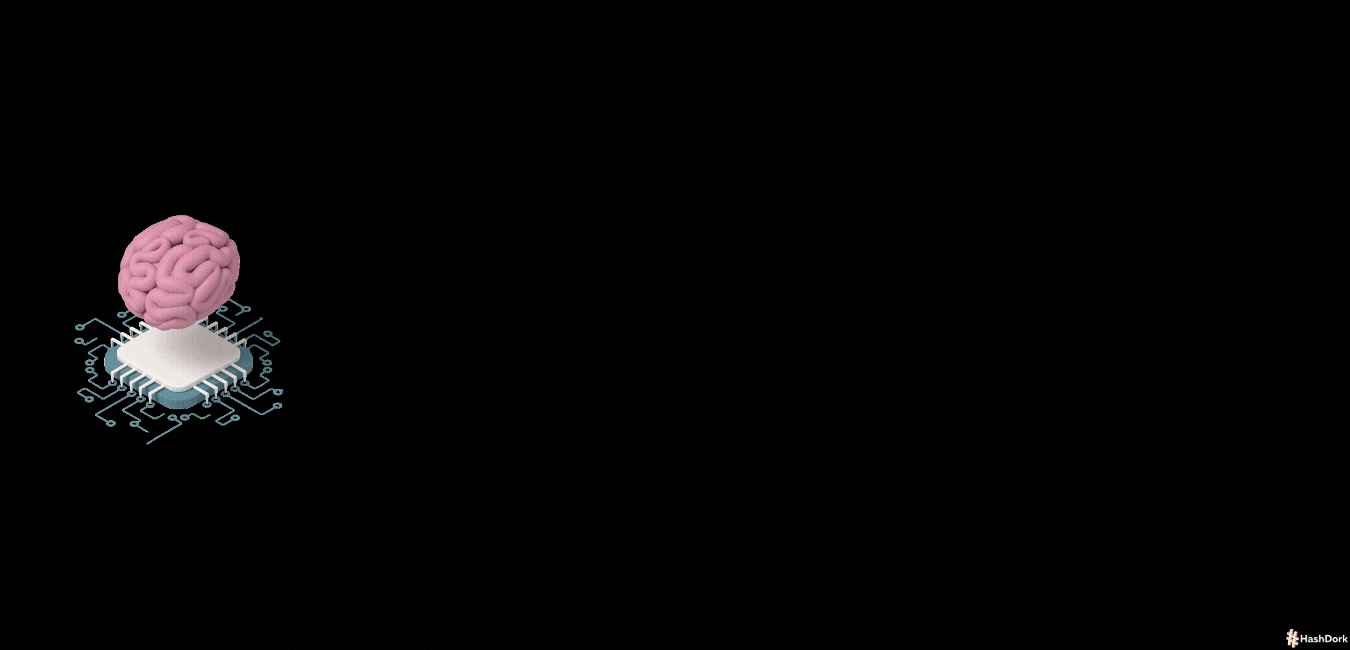Table of Contents[Hide][Show]
Think about putting your memories, ideas, and consciousness into a computer. This would let your mind live outside of your body. Might this be the key to attaining digital immortality?
The hypothetical process of scanning and documenting an individual’s mental state, which encompasses memories, emotions, and consciousness, and transferring it to a digital medium is referred to as mind uploading.
Ideally, this digital copy would replicate the operations of the original mind such that it may run inside a computer system.
On the other hand, brain uploading is more concerned with reproducing the functional and physical features of the neural network of the brain. Mind uploading highlights the movement of cognitive processes; brain uploading addresses the structural and functional reproduction of the brain itself.
When destructive uploading, also known as “copy-and-delete,” is done, the brain is taken apart at the microscopic level to record its structure and functions. The destruction of the original biological brain is a natural outcome of this process.
The objective of non-destructive methods is to preserve the brain by using complex imaging technologies to map neural connections without causing any damage. Although non-destructive techniques are less invasive, they are currently confronted with substantial technological challenges to achieve the required resolution for precise replication.
The idea of putting a person’s mind into a machine comes from science fiction. Initially, authors envisioned futures in which the human mind could be digitized, so giving individuals immortality or new forms of existence.
The foundation for serious research into the feasibility of mind uploading was established by these imaginative stories.
Mind uploading is frequently linked to the pursuit of digital immortality in contemporary discourse, which enables one’s consciousness to endure beyond the physical body’s lifespan. This concept is consistent with the transhumanist objective of transcending human limitations through technology.
Furthermore, developments in AI and neuroscience have attracted attention to mind uploading as a possible route to produce advanced AI systems or digital form preservation of human consciousness.
In this blog, we will look into the compelling concept of brain and mind uploading, including its definitions, methods, strategies, simulation requirements, and much more.
Scientific & Theoretical Foundations
Neuroscience of Consciousness
- Neuronal Architecture: The brain is made up of about 86 billion neurons, and each one makes thousands of synaptic connections. Together, these connections make up a complex network that is necessary for thinking and learning.
- Synaptic Connectivity: About 150 trillion synapses allow these neurons to talk to each other. These synapses make it possible for complicated signaling paths that support behavior, thought, and memory.
- Dynamic Plasticity: The brain is dynamically plastic, which means that synaptic strengths and neuronal connections can change in reaction to new events, learning, and changes in the environment.
- The “Hard Problem” of Consciousness: This term denotes the difficulty of understanding the mechanisms by which subjective experiences and self-awareness are generated by physical brain processes.
- Subjective Experience Emergence: The fundamental question in neuroscience is how neuronal interactions result in personal experiences.
- Connectome Mapping: Projects like the Human Connectome Project are trying to make a full picture of the brain’s neural links so that we can learn more about how it works.
- Information-Theoretic Models: These models look at how the brain’s networks receive and send information, helping us understand how the mind works.
- Mapping Challenges: The brain’s complexity requires the use of complex computational and imaging techniques to generate an in-depth visualization of all neuronal connections.
Computational Neuroscience & Theoretical Models
- Spiking Neural Networks (SNNs): SNNs act like neurons that talk to each other through short spikes, which is very similar to how neurons work in the brain.
- Rate-Based Models: These models show how neurons work by looking at the average firing rates over time. They make neural processes easier to understand.
- Information Geometry: This field examines the geometric structures of neural activity patterns, which helps in understanding the manner in which the brain processes information.
- Holographic Representations: Some theories say that the brain stores and retrieves memories more reliably by encoding information in multiple scattered patterns, like holography.
- Modeling Neural Delays: It is very important to accurately model the time delays in neural signal transfer if we want to understand how the brain works in terms of time.
- Non-Linear Activation Functions: The complexity of neural computations is captured by modeling the non-linear responses of neurons to inputs.
- Synaptic Weight Distributions: Differences in the strengths of synapses affect learning and memory, and knowing how they are spread out helps us model how the brain changes over time.
- Formulas and equations: Making accurate mathematical models helps us simulate and guess how neurons will act in different situations.
- Uses of SNNs: SNNs are used in areas like pattern recognition and sense processing, taking advantage of their ability to save energy and code information over time.
- Problems with Using SNNs: Even though they have a lot of promise, SNNs are hard to train and hard to scale up, so more study is needed to make them more useful in real life.
Advanced Brain Imaging & Data Acquisition
High-Resolution Structural Scanning
- Serial Sectioning and Electron Microscopy: Researchers use serial sectioning along with electron imaging to get brain tissue detail on the nanometer scale. This involves repeatedly imaging ultrathin pieces to rebuild comprehensive three-dimensional structures.
- Cryo-ultramicrotomy and 3D Reconstruction: Cryo-ultramicrotomy is a technique that preserves the native state of frozen biological samples by dividing them into ultrathin sections. Then, pictures are taken of these parts, and computer programs put the pictures together to make high-resolution 3D models that show how neural networks are built.
Functional Imaging Modalities
- fMRI, PET, MEG: Functional Magnetic Resonance Imaging (fMRI) is a technique that uses changes in blood oxygenation to map brain activity. Radiolabeled substances in positron emission tomography (PET) help to visualize metabolic events. High temporal resolution magnetic fields produced by neural activity are measured using magnetoencephalography (MEG). The orientation of white matter tracts is revealed through the mapping of water molecule diffusion using High Angular Resolution Diffusion Imaging (HARDI).
- Emerging Modalities: The objective of nanoscale in vivo scanning techniques is to monitor neural activity at the individual synapses of living organisms. The goal of these innovative techniques is to offer unparalleled insights into the real-time operation of neural circuits.
Connectomics & Data Extraction
- Reconstructing Neural Networks: High-resolution image data is processed by advanced algorithms to make a picture of neural connections, which include the brain’s 150 trillion synapses. Comprehensive models of brain circuitry depend on these computational techniques.
- Data Storage Challenges: The mapping of the entire human brain at synaptic resolution results in datasets that are of petabytes. Efficient data compression and management strategies are essential for the effective management and analysis of this huge quantity of information.
- Retaining Transient States: In addition to static structures, it is crucial to observe dynamic properties, including neural plasticity, neurotransmitter fluctuations, and synaptic strength. Understanding learning processes and the flexibility of neural networks depend on these transitory states.

Computational Infrastructure & Simulation Requirements
Estimating Computational Complexity
Simulation Levels:
- Analog Network Models: Approximately 10^15 floating-point operations per second (FLOPS) are required to simulate the brain at this level.
- Detailed Spiking Network Emulations: These models need between 10^18 and 10^22 FLOPS to correctly copy the spiking patterns of neurons.
- Molecular-Level Models: The computational requirements can increase by up to 10^43 operations when interactions are captured at the molecular scale.
Hardware Trends:
- Moore’s Law: Computing capacity has experienced exponential development as the number of transistors in integrated circuits has doubled every two years.
- Enhanced Parallel Processing: The introduction of GPU and TPU clusters has improved the parallel processing capabilities, allowing for the more efficient management of complex simulations.
- Prospects for Quantum Computing: Quantum computing technologies that are just starting to appear could speed up processes even more, which could help with the huge need for brain models.
Simulation Platforms & Software Frameworks
Current Platforms:
- Blue Brain Project: The objective is to reconstruct and simulate the mammalian brain at the cellular level, thereby revealing its complex architecture.
- NEURON: A simulation environment that is extensively employed in computational neuroscience for the purpose of modeling an individual neuron and neural networks.
- NEST: Intended for the large-scale simulation of spiking neural networks, with the objective of facilitating the examination of network dynamics and functions.
Integration with AI/ML:
- The identification of complex neural patterns and error correction during simulations can be helped by the integration of machine learning and AI algorithms, which enhance pattern recognition within neural data.
Real-Time Simulation Challenges:
- Problems with scalability and fault tolerance must be resolved to achieve real-time performance. Strategies consist of optimizing code for parallel execution and implementing robust error-handling mechanisms to ensure the stability of the simulation.
Digital Twin Construction
Building Virtual Replicas:
- To make a digital twin, you need to make a thorough computer model of the brain that looks and works just like the real brain. For this process to work, high-resolution imaging is needed to see the details of the anatomy, and complex methods are needed to correctly copy how neurons move.
Synchronization Techniques:
- It is imperative to preserve the coherence between the biological brain and its digital counterpart. The digital model is able to update in response to changes in the biological system, ensuring synchronized operation between the two, via techniques such as real-time data transmission and adaptive algorithms.
The challenges inherent in brain emulation are being gradually addressed by advancements in computational infrastructure and simulation tools, which are bringing us closer to the reality of comprehensive digital replicas of neural systems.
Brain-Computer Interfaces and Neuroinformatics
Role of Brain-Computer Interfaces (BCI)
Invasive vs. Non-Invasive BCIs:
- Invasive BCIs: These include the surgical implantation of devices, such as CMOS electrode arrays, directly into brain tissue. They capture comprehensive neural signals by providing high spatial and temporal resolution.
- Non-Invasive BCIs: Electroencephalography (EEG) and magnetoencephalography (MEG) are techniques that capture brain activity without the need for surgery. They frequently show diminished signal fidelity as a result of interference from the the skull and adjacent tissues, despite being safer and more accessible.
Bidirectional Communication:
- The objective of advanced BCIs is to facilitate two-way communication, which involves the decoding of neural signals (“reading”) and the transmission of information back to the brain (“writing”). This could enable the development of intricate applications, such as sensory feedback in prosthetic devices.
Integration Challenges:
- Latency: Signal processing delays can make real-time apps less useful.
- Bandwidth: High-capacity channels are necessary to transmit extensive neural data.
- Signal Fidelity: It is important to maintain the accuracy and noise-free acquisition of signals, particularly for non-invasive methods.
Neuroinformatics & Data Analytics
- Managing High-Dimensional Brain Datasets: Neuroinformatics uses specific tools to manage intricate and extensive neural data. Brainliner and other platforms offer time-aligned neurophysiological and behavioral data, that helps in neural decoding and data-driven neuroscience.
- Big Data Frameworks and AI: Real-time neural pattern analysis is enabled by the integration of AI and big data technologies. The comprehension of brain function can be improved by the identification of complex relationships within the data by machine learning algorithms.
- Standardization and Data-Sharing Protocols: Effective data sharing and collaboration in neuroscience research require the establishment of common standards and protocols. The responsible use of shared data is promoted and privacy concerns are addressed by harmonizing AI governance regulations with neuroinformatics practices.
Conclusion
Mind uploading is a complicated topic that brings up a lot of technology issues and chances. To accurately copy the brain’s complex structure and changing functions, we need to make progress in high-resolution scans, data processing, and computer modeling.
Addressing these multidisciplinary challenges necessitates the integration of a variety of disciplines, including neuroscience, nanotechnology, and computer science.
In the long term, one of the most important goals is to make experimental versions. The goal of these samples is to test the slow uploading process and the creation of digital twins, which are computer brains that are exact copies of real brains.
To do this, people from different science fields must work together and use their knowledge to make sure that the emulation is complete and correct. Working together in this way is very important for improving methods and getting around the limits of current technology.
As research advances, ethical considerations must remain at the top of the list.
It is very important to protect people’s identities and think about how this might affect society as a whole. Setting up universal norms and legal guidelines will help mind-uploading technologies be developed and used in a responsible way. The goal of digital immortality is getting closer to truth by working together to solve problems. This could have huge effects on how people live and how long they live.







Leave a Reply